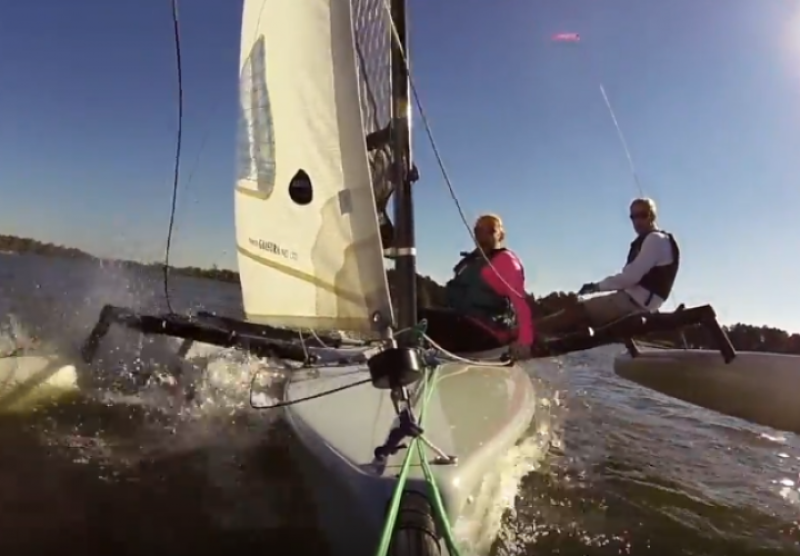
January 18th, 2017
It is my opinion that the biggest mistake people make when double-handing a Weta when downwind reaching, is having one person steer the boat while the other sheets the screecher. I don’t believe this is the best way to go about things as one or the other of the sailors is having to constantly react, always an instant too late, to what the other is doing. The ideal arrangement is to have the helmsman both steer the boat and sheet the screecher.
Unlike the mainsail upwind, the Weta screecher shouldn’t be constantly sheeted in and out. There is a sweet spot where the screecher is properly set and delivering optimum power. Find it and hold it roughly there. Steer too high and you’ll quickly be overpowered. Steer too low and you’ll find yourself losing speed.The trick is for the helmsman to instantly react to changes in the wind by feeling the pressure on the screecher and steering so everything stays in the sweet spot. The boat reacts instantly to the helm and this is really the best way to stay in the groove, making the best speed without becoming over or underpowered. The idea should be to keep the power up and speed on without constantingly sheeting the screecher in and out. The very best way to do this is to have one person steer AND sheet the screecher.
So what’s left for the crew to do? Actually the crew can play an important role when downwind reaching - keep the boat in good trim. The flatter the crew can hold the boat without fully submerging the leeward ama and yet keeping the windward ama completely out of the water, the faster the boat will go. This allows the boat to travel faster and perhaps obtain a better VMG.
By Tom Kirkman
Bonus clip the "Weta Squeal"